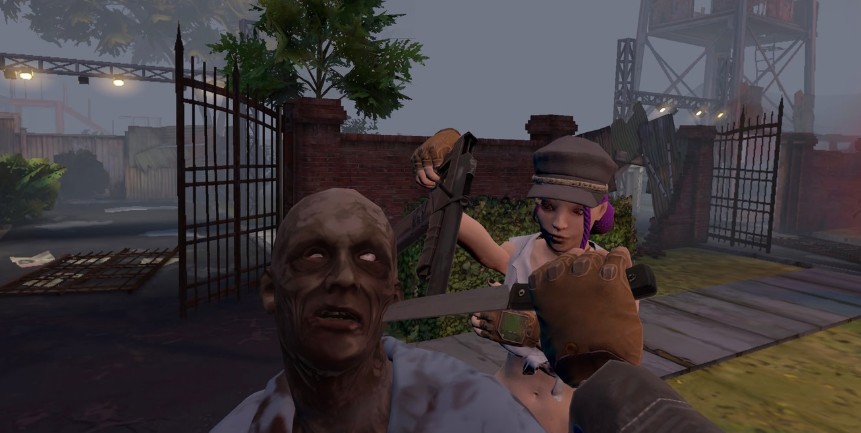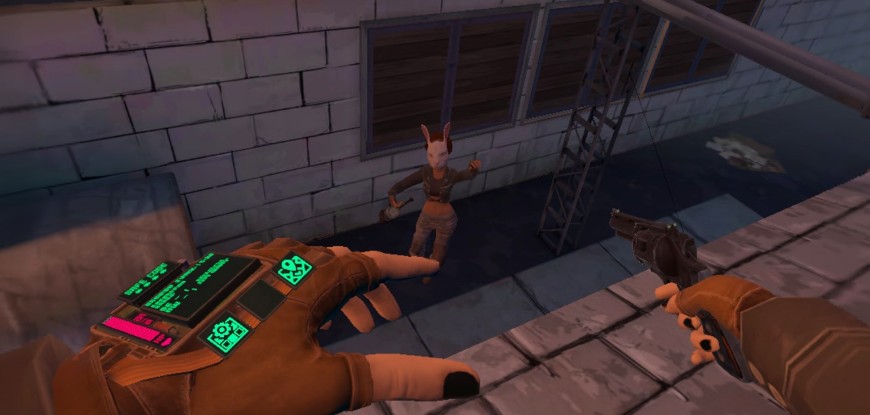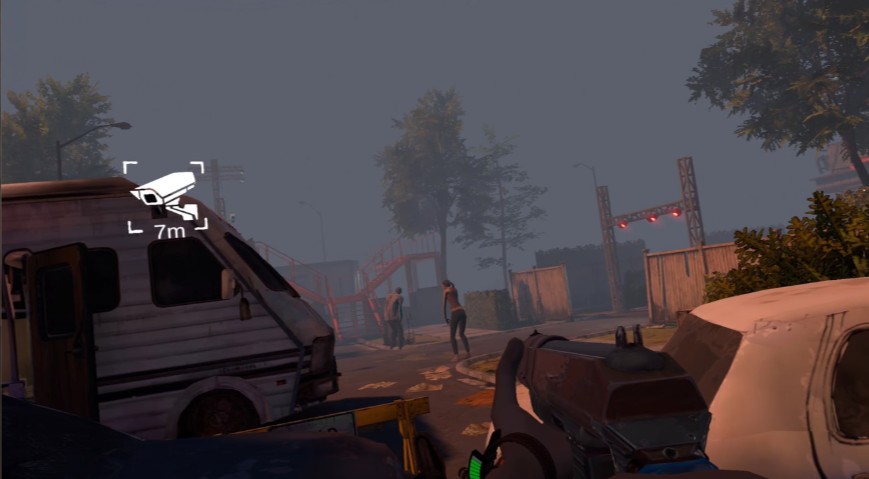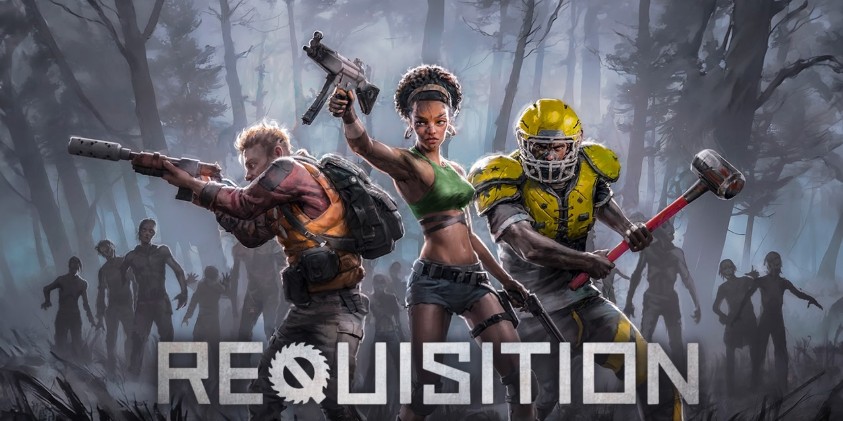Survival crafting games awaken something ancient within us. As Subnautica’s designer observed, ‘Everyone’s little monkey brains like shelter and food’-a primal instinct driving our fascination with transforming debris into tools for survival. Requisition VR leverages this deeply rooted psychology through immersive virtual reality, thrusting players into decaying urban landscapes where every soda can or broken chair could become life-saving equipment. Unlike traditional screen-based games, VR makes scavenging tactile: you’ll physically grab objects, inspect them in your hands, and combine components through intuitive motions.

Introduction: The Primal Urge to Survive in Virtual Reality
This Meta Quest exclusive blends PvP and PvE threats within extraction-shooter mechanics-a first for standalone VR headsets. While scavenging abandoned hospitals or factories, you’ll craft makeshift weapons like pipe bombs from plumbing supplies while monitoring both mutated creatures and rival players. The Quest 3’s hardware advancements, including long-distance live meshing and performance optimization tools, enable these dense environments without motion-sickness-inducing lag. Consider how Arken Age’s upcoming Quest 3 release demonstrates the platform’s growing capacity for complex VR experiences.

Why does this fusion matter? VR amplifies survival stakes beyond abstract health bars. Your actual body ducks behind cover when gunfire echoes; hunger becomes visceral when you rummage through virtual dumpsters. The extraction mechanic-risking gathered resources for greater rewards-creates tension no flat screen can replicate. What would you build if your next meal depended on it? Requisition VR answers that question through motion-tracked hands, not mouse clicks.
Crafting Chaos: The Art of Improvisation in Requisition VR
Requisition VR’s crafting transcends menu-based systems by demanding physical improvisation. Players don’t select blueprints-they twist pipes into melee spears, tape nails to baseball bats, or rig propane tanks with ignition sources for area-denial traps. This mirrors Niantic’s Spatial SDK advancements on Quest 3, where semantic segmentation allows environments to recognize object properties: a gasoline canister isn’t just scenery but volatile fuel. One player rigged proximity mines using soda cans and motion sensors scavenged from security cameras-components that behave realistically when combined. Forgetting adhesive? Duct-tape a kitchen knife to a broom handle for a silent takedown tool. The system rewards observational skills: a discarded car battery becomes power for electrified fences against mutants.

Performance stability underpins this chaos. Meta’s Runtime Optimizer for Unity dynamically resolves bottlenecks during firefights-critical when 12 players clash amid environmental hazards. Unlike PC VR ports, Requisition leverages Quest 3’s hardware to sustain 90fps during explosions or creature swarms. Compare Arken Age’s single-player focus: Requisition juggles PvPvE in larger maps via live meshing, enabling multi-floor buildings with destructible interiors. One hospital level features collapsing ceilings that alter navigation-requiring frame-precise physics. Lag here isn’t inconvenience; it’s death. Meta’s research confirms 20-40 minutes as the ideal VR session length-Requisition’s extraction windows align perfectly with this biological threshold.
Survival hinges on threat triangulation. Mutated ‘Reavers’ track via sound: stepping on glass alerts nearby packs, while gunfire draws both creatures and players. A grenade crafted from drain cleaner and bottles might clear monsters but reveal your position to rivals. Extraction zones intensify this balance: securing a chopper requires defending it for 90 seconds-a magnet for ambushes. I once lost a rare chainsaw blade because I prioritized PvE over a sniper lurking in a bookstore. Pro tip: Craft distractions first. Toss noise-makers like modified alarm clocks away from your path to split enemy focus.
The extraction economy elevates stakes. Everything scavenged-bolts, antibiotics, weapon parts-must be hauled to exit points. Die mid-raid? All loot vanishes. This creates asymmetric encounters: a player with minimal gear might stalk heavily loaded targets near extraction zones. Backpack weight affects movement speed and noise-carrying three rifles makes evasion impossible. One squad used a refrigerator door as mobile cover during extraction but slowed critically when swarmed. Always reserve inventory space for ‘escape kits’: light healing items and a single-use weapon like a Molotov for emergencies.

Environmental mastery offers unobvious advantages. Rain amplifies electrical traps; dark interiors hide tripwires strung between shelves. Scavenge hospitals for antibiotics to counter poison mutations or factories for metal sheets to reinforce hideouts. Warning: Over-customizing weapons risks failure. A shotgun modified with extra barrels might jam during horde attacks-test creations in safe zones first. Tencent’s Light of Motiram lawsuit highlights cloning risks, but Requisition’s VR-centric systems-like physics-based assembly-remain uniquely tactile. Your survival isn’t dictated by stats but by how convincingly you can turn a toaster into a landmine.
Conclusion: Redefining Survival VR Through Tactile Innovation
Requisition VR transcends typical extraction shooters by weaponizing immersion-where physical crafting and environmental awareness become your survival cortex. This Quest 3 exclusive proves standalone VR can handle complex PvPvE ecosystems, leveraging Niantic’s Spatial SDK for semantic object recognition: that gasoline can isn’t scenery but volatile chemistry. While Arken Age showcases Quest 3’s graphical prowess in single-player, Requisition pioneers multiplayer chaos through Meta’s Runtime Optimizer-dynamically resolving performance bottlenecks during 12-player firefights.
Prioritize adaptability over hoarding. Early extraction with modest loot often beats catastrophic loss; reserve one inventory slot for noise-makers to divert Reavers and rivals simultaneously. Remember: environments are tactical partners-rain amplifies electrical traps, darkness hides tripwires. Tencent’s Light of Motiram lawsuit reminds us cloning fails, but Requisition’s physics-based assembly creates irreplicable tension. Will your duct-taped flamethrower hold? Only your hands-on testing tells.
This game signals a shift: VR survival isn’t about menus but muscle memory. Future titles must match its tactile alchemy-where every object’s material properties matter. Your next session? Scout exits before scavenging, and never craft untested weapons mid-raid. The true reward isn’t extraction success but learning how a toaster becomes a trap.

